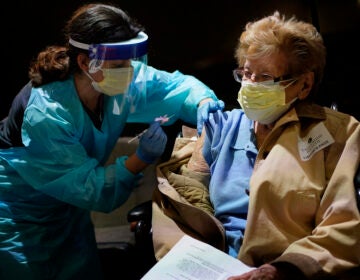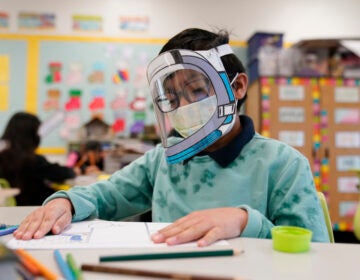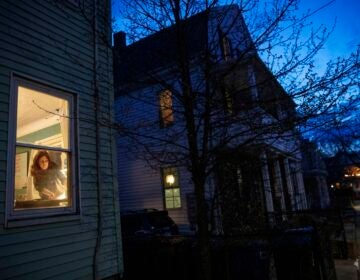Del.’s COVID-19 outbreak started at UD one year ago. Campus life may never be the same
Today marks one year since Del. announced a UD professor tested positive for COVID-19, its first confirmed case. Here’s how the college experience may change permanently.
Listen 4:51
First day of classes for the Fall 2020 semester: Lydia Timmins, Assistant Professor of Communications, kicks off her Fall Semester 2020 class "COMM 324: Electronic Media Production" as a hybrid online and in-person class. (courtesy Univ. of Delaware)
Ask us about COVID-19: What questions do you have about the coronavirus and vaccines?
There were no hand-delivered brownies for University of Delaware students living in Nana Ohemaa Asante’s hall this semester.
As a resident assistant, Asante typically takes a tray of homemade brownies door-to-door to introduce herself and start forming relationships. But like so many aspects of college life, the COVID-19 pandemic has forced that tradition to change.
“I still made brownies and I still made cookies, but I put them in little Ziploc bags and I dropped them off,” she said. “You try to comfort people in ways that you can from a distance.”
March 11 marks one year since UD president Dennis Assanis announced an early start to spring break after a pair of graduate students and a postdoctoral researcher tested positive for COVID-19. They had recently been with a UD professor who was the first person in the state to test positive for the virus.
“I remember the day we were told that we were going home, and everybody wasn’t aware of how serious this pandemic was,” Asante said. “We were like, ‘OK, I’ll see you in two weeks.’ And there are some friends that I haven’t seen in almost a year because of this.”
As more cases were confirmed, UD shifted most classes online, starting a series of cascading consequences affecting students, teachers, and other staff — as well as the university’s finances. It also impacted businesses in the town of Newark that rely on thousands of students being on campus to stay afloat. And with a recent spike in cases, it’s unclear whether graduation will be held in-person.
“The last year has been a lesson in flexibility for sure,” said Andrea Boyle Tippett, UD’s director of external relations. “Everyone — from the researchers to the faculty members teaching courses to the individuals working in the dining halls and our janitorial staff — everyone’s had to pivot and find new ways to do things.”
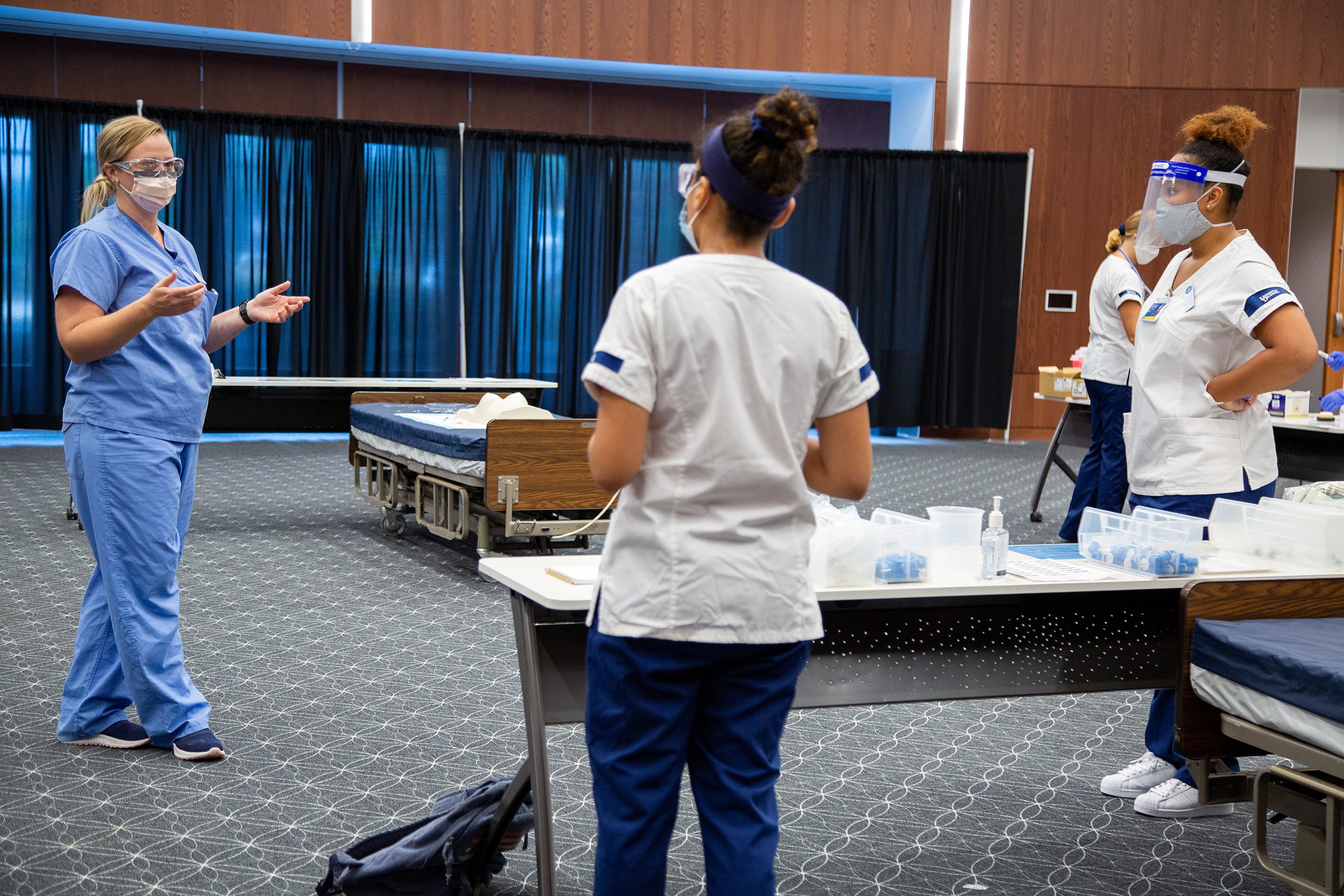
Research activity that couldn’t be done outside the lab was one of the few things to continue on the Newark campus.
Like their K-12 counterparts, professors adapted lectures and lesson plans for an online audience of students.
“We have some faculty members who have been teaching online for decades, and we had some that had never taught a class online,” Tippett said. ”We really ramped up our support in the IT and educational areas that serve the faculty. So we have a lot of workshops, training sessions.”
In-person graduation up in the air as cases spike
“It was weird trying to adapt and doing all different classes online because I learn a lot better in person,” said senior mass media major Alyssa Warner, who says the changes students like her face also come with an emotional cost.
Warner lamented the loss of what she always thought would be a wonderful end to college experience.

“I feel like senior year should have been like, you know, going out to the bar on the weekend, going out to restaurants with my friends, and instead of that, I’m just kind of cooped up in my apartment, not really seeing anyone,” she said.
“It’s really ‘me’ a lot,” Asante said of her solitary life this year.
“I know this is not what people thought of when they thought of living on campus and what people thought of when they were going to go to college … I thought there would be a lot more memories that I could make, a lot more big events. Like even walking on a stage for a commencement is a dream right now — and not in a good way, because it might not happen.”
Right now, this year’s graduation ceremonies are still up in the air, another rite of the college experience that could be lost.
“I was looking forward to the in-person graduation and decorating my cap and showing that off to everyone, so it’s really upsetting,” Warner said.
The fate of graduation could depend on reducing a big spike in cases at the school that coincided with the start of the 2021 spring semester.
The 324 cases among students and staff reported for the week ending Feb. 28 was five times higher than the previous week, and nearly three times more than the previous weekly high of 134 reported just before Thanksgiving break.
The big jump was attributed to students not following social-distancing guidelines, especially at the dining hall.
“It’s difficult for college students who are very social in nature to have to be locked down in this way, particularly when this is their foray into freedom, and then they end up restricted in that freedom,” Tippett said.
“We definitely feel for them. We understand that this is not pleasant for anyone and it’s particularly not pleasant for them. Unfortunately, we have to prioritize their physical health above all else, just as everyone does.”
Some “COVID-fatigue” could have contributed to the spike also as students get a bit more lax about following protocols especially as more students are back together.
“It’s also a little scary because there are a lot of people that just don’t really care about COVID, and they’re like not wearing masks and are still going out and partying,” Warner said. “Whereas last semester, it wasn’t as scary because we didn’t have that many people.”
About 3,900 students are living on campus this spring semester, well above the 1,300 who were living in residence halls in the fall. About 18% of classes are now actually meeting in-person, double the number from last semester.
“Every student who’s living in a residence hall is being tested every week. And then there’s a number of individuals who are randomly assigned to get testing,” Tippett said.

College town takes a hit
The lack of campus activity this year has also caused slowdowns for businesses in Newark. UD’s hometown has a population of more than 30,000 residents which balloons in size during the academic year, thanks to more than 20,000 students who call UD home.
Business owners on Newark’s typically bustling Main Street corridor — where restaurants, bars and stores cater to the college crowd — have especially felt the pinch.
“I would say that there’s more shopping and there’s more commerce in Newark when the university is in full swing and we certainly see that,” said Ryan German, owner of Café Gelato on Main Street. “It’s not just students. For us, it’s University of Delaware faculty having job interviews, or it’s university faculty having meetings, or it’s contractors that work at the university and they’re coming in to meet with officials. Just having the university of Delaware open for business is a big deal.”
Still, even though most students attended classes online this year, the student population in town wasn’t as low as one might think.
About half of the undergraduate population lives off campus in private apartments or homes they rent. Leases on those rentals are typically signed in the fall for the next school year. That means leases for this school year (2020-2021) were signed in the fall of 2019.
“A lot of them and their families said, ‘Well, we have leases, we’re coming to Newark, and we’re going to live in Newark,” Tippett said.
She estimates there’s about 10,000 students living in town this year.
The city itself has seen a drop of more than $8 million in revenue, but city manager Tom Coleman says it’s managing that decline.
“We were able to shave about $5.5 million from our expenses,” Coleman said, pointing to a hiring freeze and a number of capital projects that were postponed.
The town got $2.3 million from New Castle County’s share of the CARES ACT, which helped make ends meet.
“We actually finished in the black for the year, by about $1.8 million, but that’s not all free money, because we did postpone a lot of maintenance and capital projects,” he said.
With new federal stimulus help on the way, Coleman said Newark could see all its lost revenue fully restored.
Impact of smaller incoming class to be felt for years
UD’s finances aren’t faring quite as well.
“The cost of this so far has been about $250 million,” Tippett said. “The university made up for a chunk of that by taking money from the endowment and by finding ways to cut down on expenses elsewhere, but the situation is still evolving.”
In May, the school announced a salary freeze for many employees, while top administrators, including President Dennis Assanis and football coach Danny Rocco, took pay cuts.
The hammer continued to fall in September, when some university employees were let go. Others saw their hours cut. All staff were forced to take a period of unpaid leave and had their retirement contributions temporarily reduced.
The revenue hit from this year of COVID-19 will continue to be felt at UD for several years because of a 10% smaller incoming freshman class.
“That affects finances for the next three years as well, because you’re down that many … students, so there’s that much less tuition dollars,” Tippett said. “We do have high hopes for this for the next fall. Our applications are up overall.”
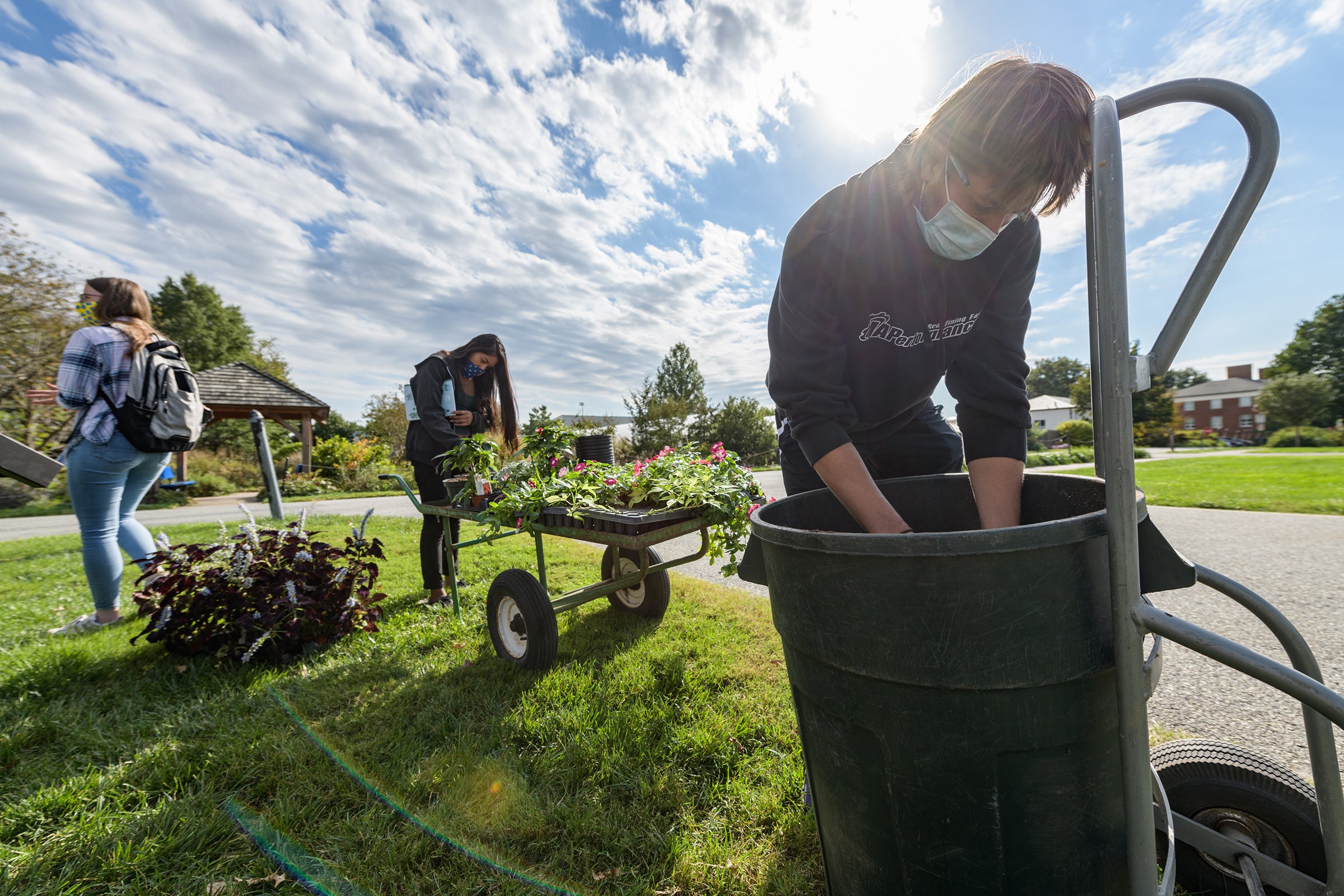
‘A mix’ of online classes could be here to stay
While UD is counting on a big return to in-person classes and on-campus activities as vaccinations continue and the pandemic subsides, there will likely be some things that don’t go back to normal.
For instance, some students and teachers have found that online classes work better in certain disciplines.
“There are students who say, ‘Hey, I thrive online and I’d rather do it this way.’ I think that in the future we’re well aware that it’s going to be a mix,” Tippett said. “Some faculty have found that there’s parts of their courses that are better taught online because they can rely more heavily on digital resources and videos and things of that nature, that may be better if the student watches them at home and then they come to the classroom to discuss it.”
Exactly how many classes continue to move forward online is unknown, she said.
“I think online classes is something that’s definitely going to stick around just because it’s easy and it’s convenient,” Warner said. “I think it will give a lot more opportunities to especially those students who are overseas and can’t afford to come over here and live well, like now they can come and take those classes virtually.”
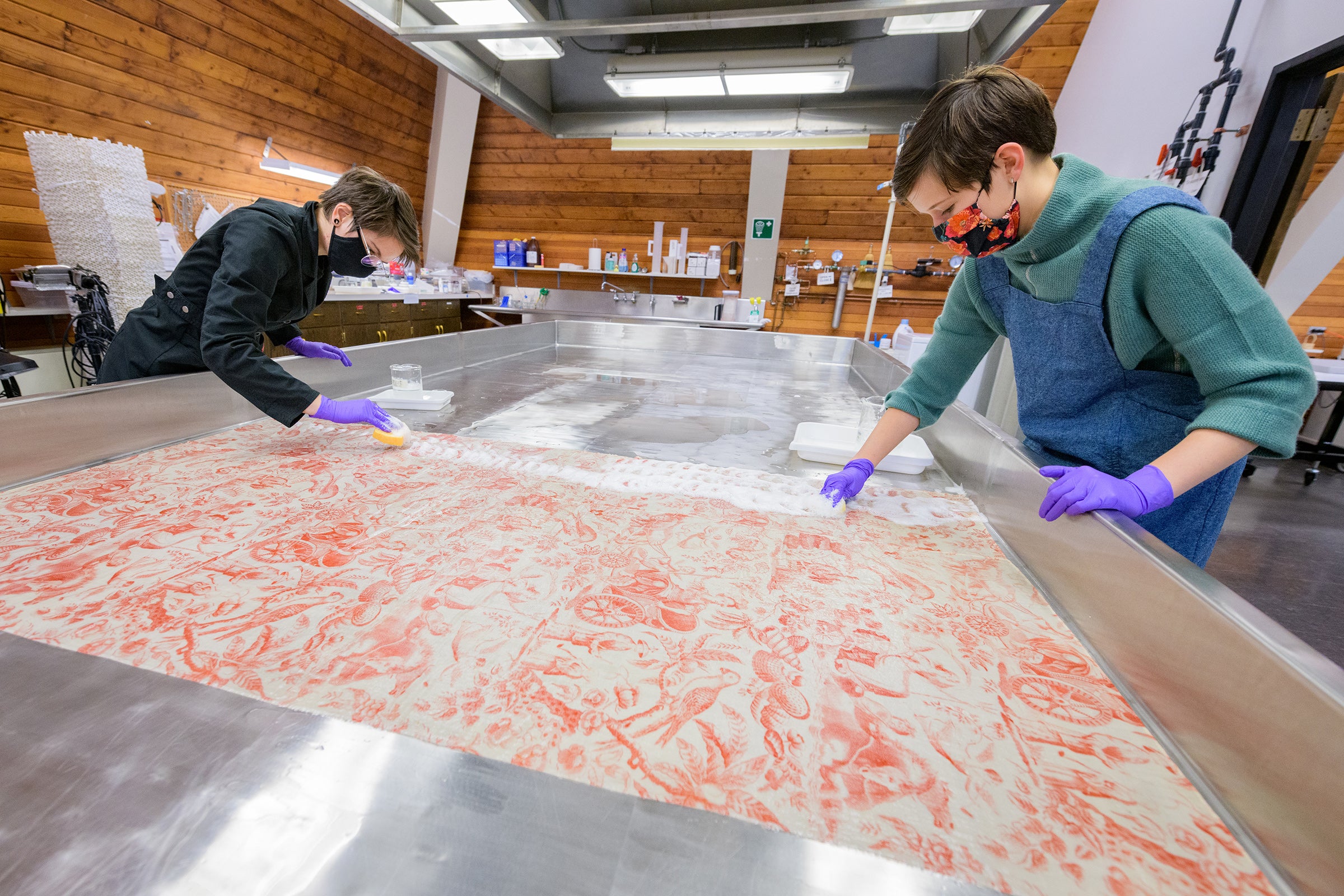
But UD is counting on the draw of the campus experience through amenities, facilities, and the social aspects of college life to eventually grow in-person attendance.
“I think that, in the future, we’re well aware that it’s going to be a mix” of online and on-campus instruction, Tippett said. “What that ratio, that mix is going to look like is still anybody’s guess.”

Get daily updates from WHYY News!
WHYY is your source for fact-based, in-depth journalism and information. As a nonprofit organization, we rely on financial support from readers like you. Please give today.




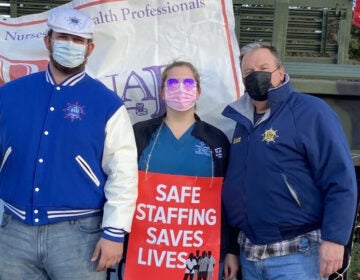
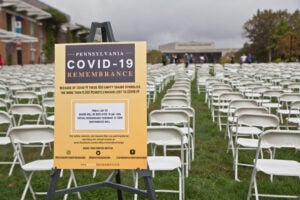
![CoronavirusPandemic_1024x512[1]](https://whyy.org/wp-content/uploads/2020/03/CoronavirusPandemic_1024x5121-300x150.jpg)
